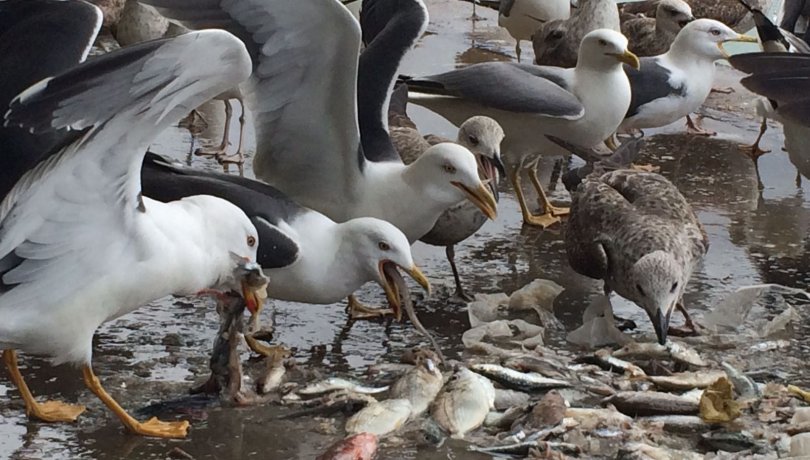A study led by the Institute of Marine Sciences (ICM-CSIC) and the Doñana Biological Station (EBD-CSIC) has monitored a series of seagulls to know their movements and create a pathogen transmission risk map. The study, published in Scientific Reports, evaluates the possible spread of pathogens through animals in environments inhabited by humans.

A study led by the Institute of Marine Sciences (ICM-CSIC) and the Doñana Biological Station (EBD-CSIC) has monitored a series of seagulls to know their movements and create a pathogen transmission risk map. The study, published in Scientific Reports, evaluates the possible spread of pathogens through animals in environments inhabited by humans.
Some species of seagulls that have colonized urban areas can affect public health by carrying pathogens such as bacteria and viruses. How seagulls spread them was unknown until now. Scientists from ICM and EBD have studied space movements in different individuals of yellow-legged gulls (Larus michahellis) in the south of the Iberian Peninsula. The seagulls followed were carriers of at least one of the three main zoonotic bacteria monitored within the epidemiological surveillance plans in Europe (Salmonella, Campylobacter and Chlamydia).
The incidence of these bacteria is increasing. Salmonella and Campylobacter infections accounted for between 94,530 and 246,307 cases in Europe in 2016. The study have obtanied new data at a regional level combining conventional epidemiological diagnostic methodologies with real-time monitoring with GPS.
Joan Navarro, researcher at the ICM-CSIC, explains that the yellow-legged gull is a good vector, since “it acts as a vector of different pathogens that can cause human disease" and that “has learned to exploit resources associated with human activity ”. However, the methodology could be applied in "other vector species" that coexist with humans, such as "pigeons or small mammals."
Maps to assess risk in urban areas
The results revealed that the greatest risk of bacterial spread occurs near the breeding areas of the seagulls studied. However, some infected individuals who traveled from Spain to Portugal were detected, which, according to the authors, “affects the relevance of sanitary regulations at international level and the need for cooperation in the control of diseases that can be transmitted by wild species, especially in cases of more virulent zoonoses, such as the Nile virus or bird flu. ”
The scientists observed that the risk areas overlap with habitats related to human activity, such as water ponds, fishing ports or tourist beaches, a situation that would increase the risk of direct and indirect transmission of diseases to and from humans.
Despite having focused on three specific bacteria, the methodology could be used for any other pathogen carried by animals. The study opens new possibilities of research by combining classical analysis techniques in epidemiology together with real-time monitoring of the movements of a pathogen-vector species to define areas of infection risk.
The next step is to develop pathogen dispersion risk maps in urban areas on a very fine scale. This spatial information could be used in epidemiological prevention plans, being able to identify sensitive points within urban areas and recommend management measures in those areas.
The approach could be expanded to build an international network that, through the use of seagulls and other potential pathogen vectors, will achieve large-scale zoonotic surveillance to implement prevention measures in sensitive habitats for humans.
Source: Pathogen transmission risk by opportunistic gulls moving across human landscapes. Joan Navarro, David Grémillet, Isabel Afán, Francisco Miranda, Willem Bouten, Manuela G. Forero & Jordi Figuerola. Scientific Reports, volume 9, Article number: 10659 (2019)